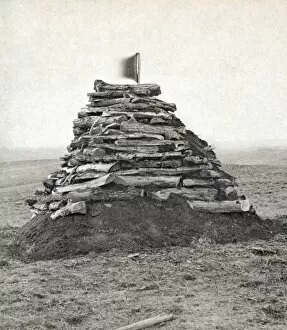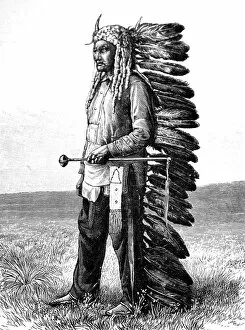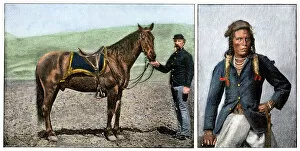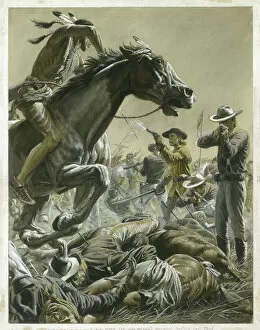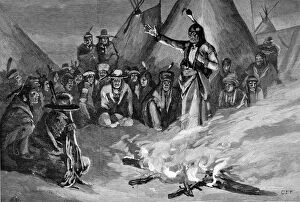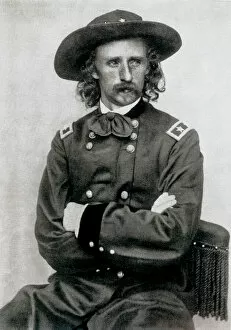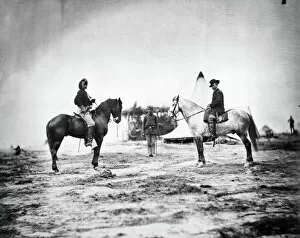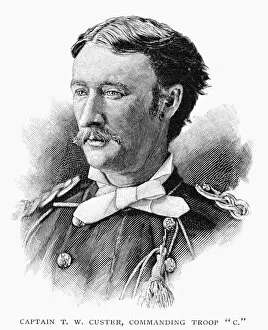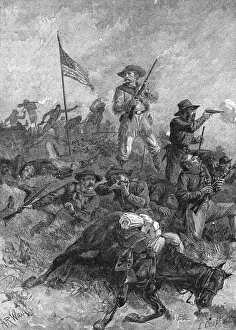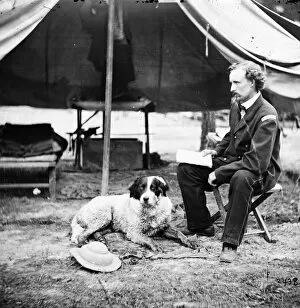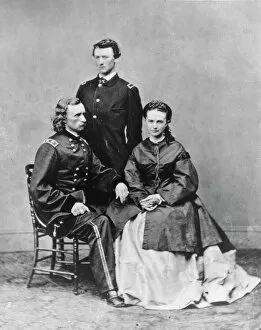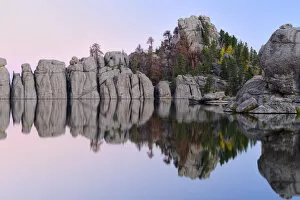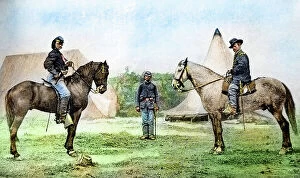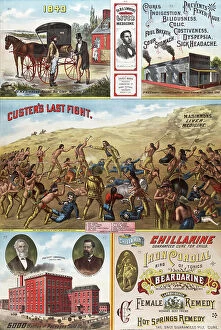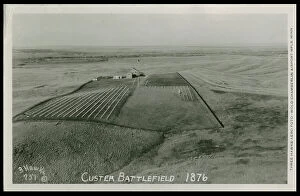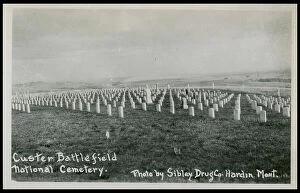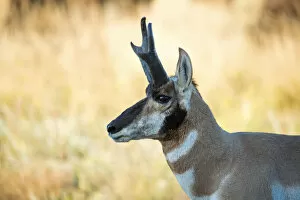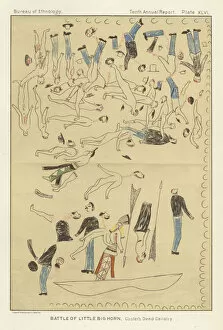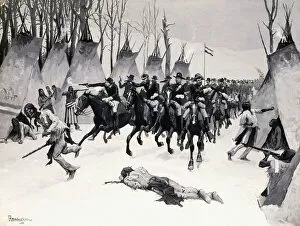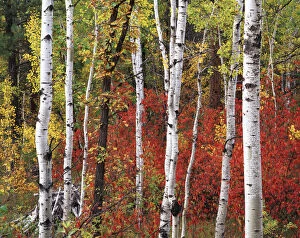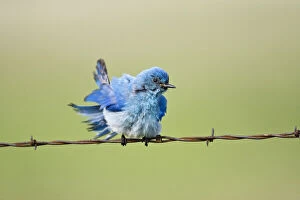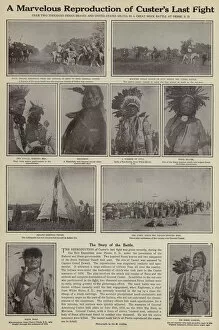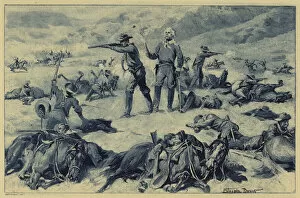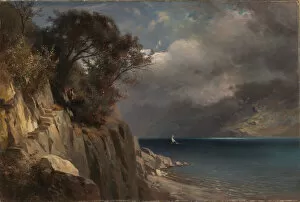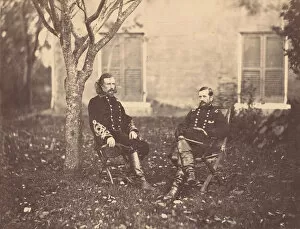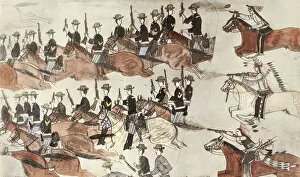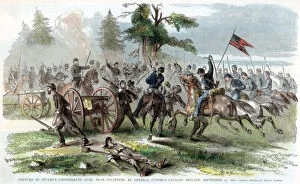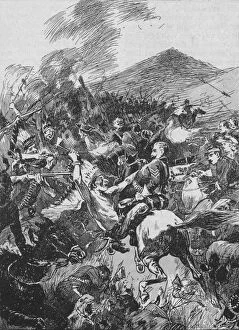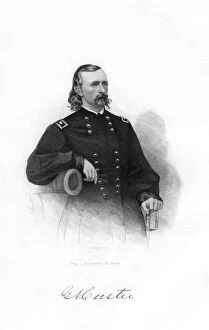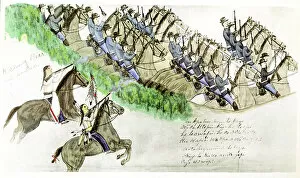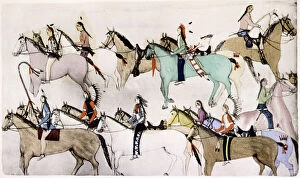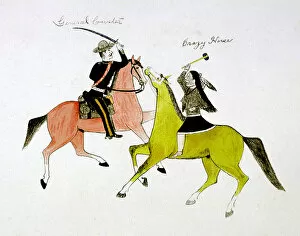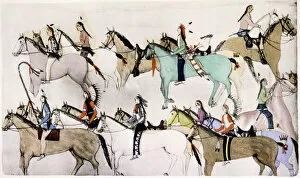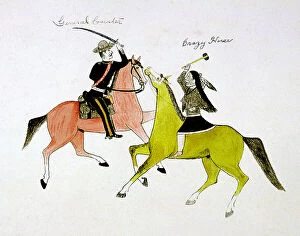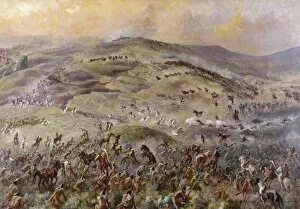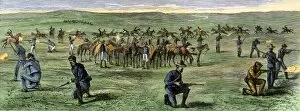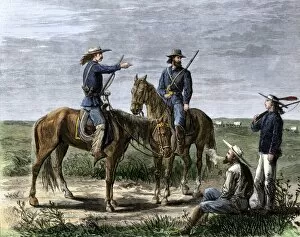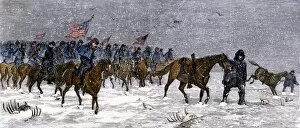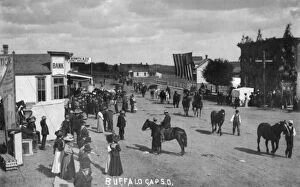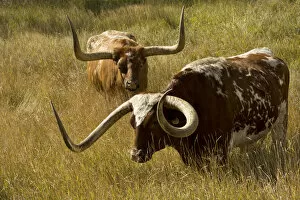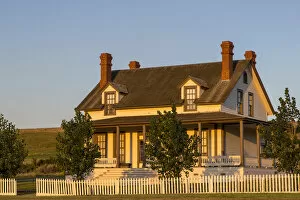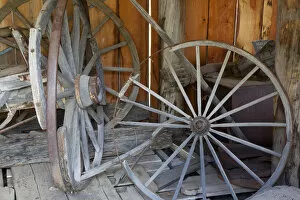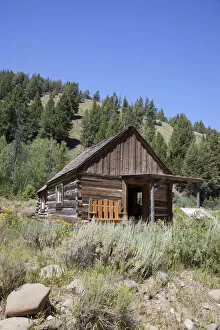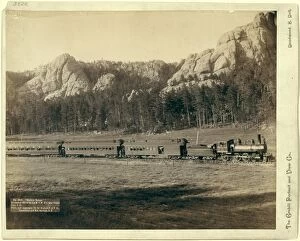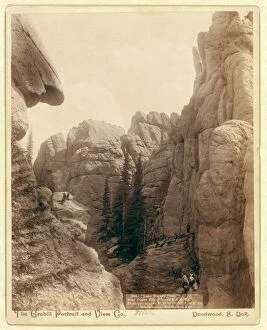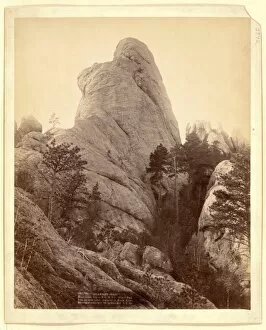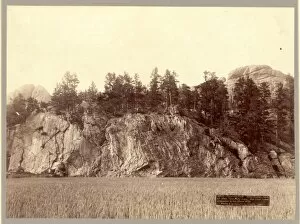Custer Collection
"Remembering Custer: A Legacy of Bravery and Tragedy" In the heartland of America stands a solemn monument, atop Custers Hill
For sale as Licensed Images
Choose your image, Select your licence and Download the media
"Remembering Custer: A Legacy of Bravery and Tragedy" In the heartland of America stands a solemn monument, atop Custers Hill, that bears witness to one of the most infamous battles in history. The Battle of Little Bighorn forever etched its name into the annals of American Indian wars. Captured through the lens of Stanley Morrow's camera in 1876, this haunting photograph showcases the stark reality - bones scattered across the landscape, remnants of lives lost. Among those who fought valiantly on both sides were two iconic figures - Sitting Bull, Chief of the Sioux Nation, and George Armstrong Custer himself. As Sitting Bull addresses a gathering with his indomitable spirit shining through, we are reminded that this clash was not just about war but also about preserving cultures and ways of life. Custer's Last Stand left an indelible mark on history as US Army survivors like Curley emerged from the battlefield astride their loyal horses. These brave souls witnessed firsthand the devastating consequences that unfolded on that fateful day. Yet amidst heroism and bravery lies tragedy too. Suicide on Little Big Horn serves as a somber reminder that even warriors can be haunted by demons unseen, and is a testament to how deeply these events affected all involved. The bond between brothers is unbreakable; Thomas Custer stood beside his older sibling throughout their military careers until fate dealt them both a cruel hand at Little Big Horn. Their story resonates with sacrifice and loyalty beyond measure. Before he became synonymous with this battle, George A. Custer served as Captain in Union Army during Civil War times alongside General Alfred Pleasonton – captured beautifully in an April 1863 photograph where youthfulness still shines brightly upon him. George Armstrong Custer will forever be remembered for his role in shaping American history – an army officer whose legacy continues to captivate our imagination today. His name evokes images of courage, leadership, and ultimately tragedy.

